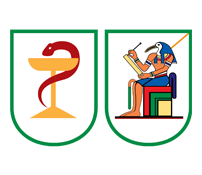Abstract
Aim: This study aims at assessing the effect of some meals/beverage and selected drugs on oral absorption of artemether (ATM) and lumefantrine (LMF). Methods: In the in situ model, artemether-lumefantrine (AL) tablets were crushed and administered to anesthetized rabbits (n=2) via oral cannula either alone (CTR1) or with food components/beverage [i.e., starch (STC), albumin (ALB), sunflower oil (SFO) or carbonated drinks (CBS)] or drugs [i.e., lamivudine (LMV) or metronidazole (MTN)]. Blood samples were taken from cannulated carotid artery post dose administration. In the in vivo model, forty two healthy human subjects (28 male and 14 female) in groups of six persons received AL tablet alone (CRT2) or “eba” (cassava starch) with melon soup (EMS) or corn pap with milk and “akara” (fried beans cake) (PMA) or fruits (FTS) or CBS or drugs (i.e., LMV or MTN). ATM and LMF plasma concentrations were obtained simultaneously from plasma using reverse phase high pressure liquid chromatographic analysis. Results: There was significant reduction in ATM Ka due to STC, ALB, CBS, MTN and LMV (Ka ≤ 1.371 h-1) compared with CRT1 (3.567 h-1), p < 0.05). LMV and MTN also reduced the Ka and AUC of ATM and LMF, p < 0.05. Similarly, in vivo study showed significantly lower ATM AUC and Ka values for EMS (0.775 µghmL-1 and 0.041 h-1) and CBS (0.248 µghmL-1 and 4.155 h-1) compared with the CRT2 (6.090 µghmL-1 and 0.362 h-1). Conclusion: EMS or CBS resulted in significant reduction in the bioavailability of ATM and LMF and can influence the treatment outcomes.
Recommended Citation
Awofisayo, Sunday Olajide; Arhewoh, Matthew I.; and Okhamafe, Augustine O.
(2019)
"Effect of Food/Beverage and Selected Drugs on the Oral Absorption of Artemether-Lumefantrine Tablet: an in situ and in vivo Study,"
Bulletin of Faculty of Pharmacy Cairo University: Vol. 57
:
Iss.
2
, Article 4.
Available at: https://doi.org/10.21608/bfpc.2019.101872
Creative Commons License

This work is licensed under a Creative Commons Attribution-NonCommercial-No Derivative Works 4.0 International License.










Follow us: